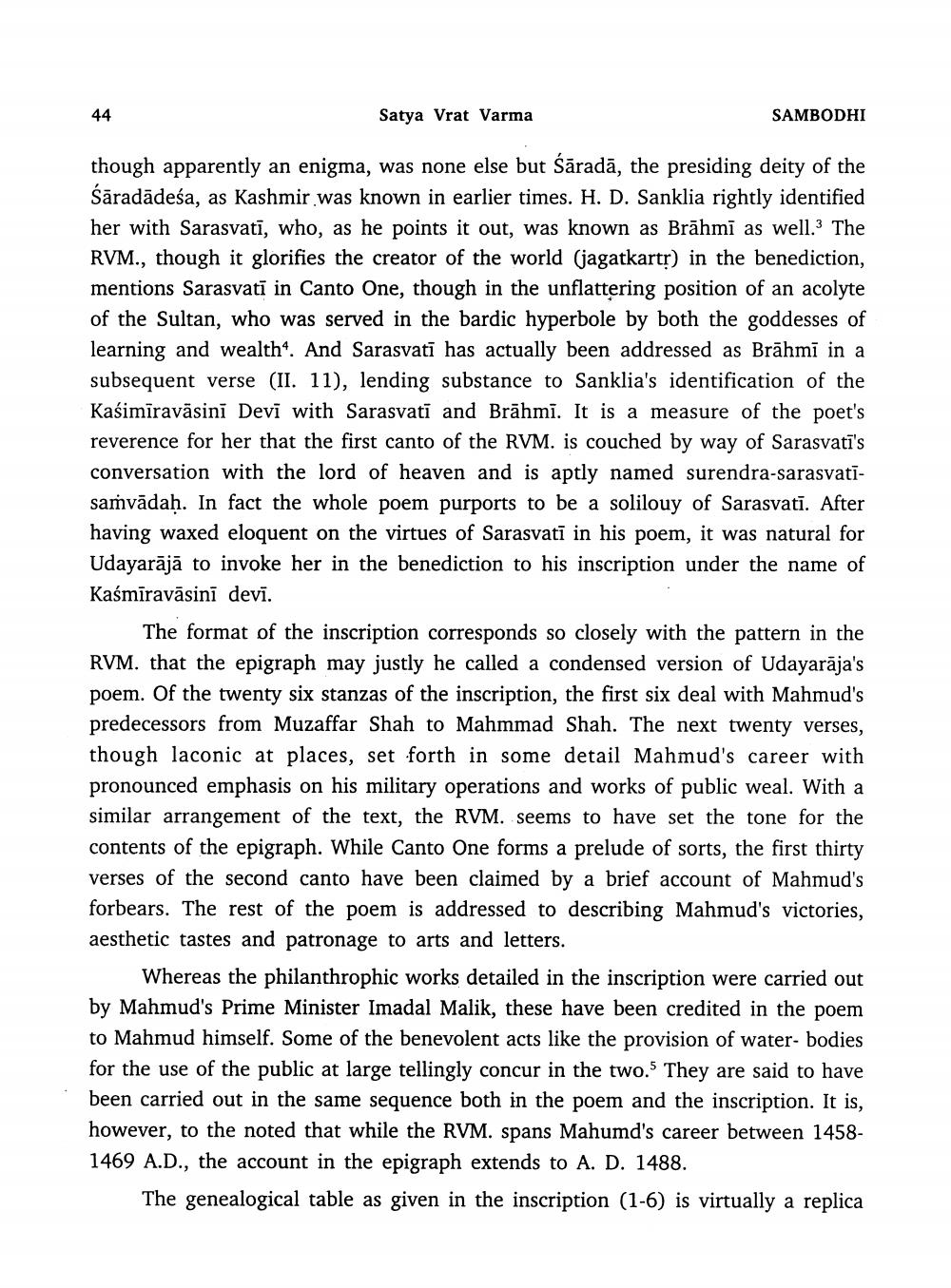________________
44
Satya Vrat Varma
though apparently an enigma, was none else but Śārada, the presiding deity of the Śāradadeśa, as Kashmir was known in earlier times. H. D. Sanklia rightly identified her with Sarasvati, who, as he points it out, was known as Brahmi as well.3 The RVM., though it glorifies the creator of the world (jagatkartṛ) in the benediction, mentions Sarasvati in Canto One, though in the unflattering position of an acolyte of the Sultan, who was served in the bardic hyperbole by both the goddesses of learning and wealth. And Sarasvati has actually been addressed as Brāhmi in a subsequent verse (II. 11), lending substance to Sanklia's identification of the Kasimiravāsini Devi with Sarasvati and Brähmi. It is a measure of the poet's reverence for her that the first canto of the RVM. is couched by way of Sarasvati's conversation with the lord of heaven and is aptly named surendra-sarasvatisamvadaḥ. In fact the whole poem purports to be a solilouy of Sarasvati. After having waxed eloquent on the virtues of Sarasvati in his poem, it was natural for Udayarājā to invoke her in the benediction to his inscription under the name of Kasmiravāsini devi.
SAMBODHI
The format of the inscription corresponds so closely with the pattern in the RVM. that the epigraph may justly he called a condensed version of Udayaraja's poem. Of the twenty six stanzas of the inscription, the first six deal with Mahmud's predecessors from Muzaffar Shah to Mahmmad Shah. The next twenty verses, though laconic at places, set forth in some detail Mahmud's career with pronounced emphasis on his military operations and works of public weal. With a similar arrangement of the text, the RVM. seems to have set the tone for the contents of the epigraph. While Canto One forms a prelude of sorts, the first thirty verses of the second canto have been claimed by a brief account of Mahmud's forbears. The rest of the poem is addressed to describing Mahmud's victories, aesthetic tastes and patronage to arts and letters.
Whereas the philanthrophic works detailed in the inscription were carried out by Mahmud's Prime Minister Imadal Malik, these have been credited in the poem to Mahmud himself. Some of the benevolent acts like the provision of water- bodies for the use of the public at large tellingly concur in the two.5 They are said to have been carried out in the same sequence both in the poem and the inscription. It is, however, to the noted that while the RVM. spans Mahumd's career between 14581469 A.D., the account in the epigraph extends to A. D. 1488.
The genealogical table as given in the inscription (1-6) is virtually a replica.




